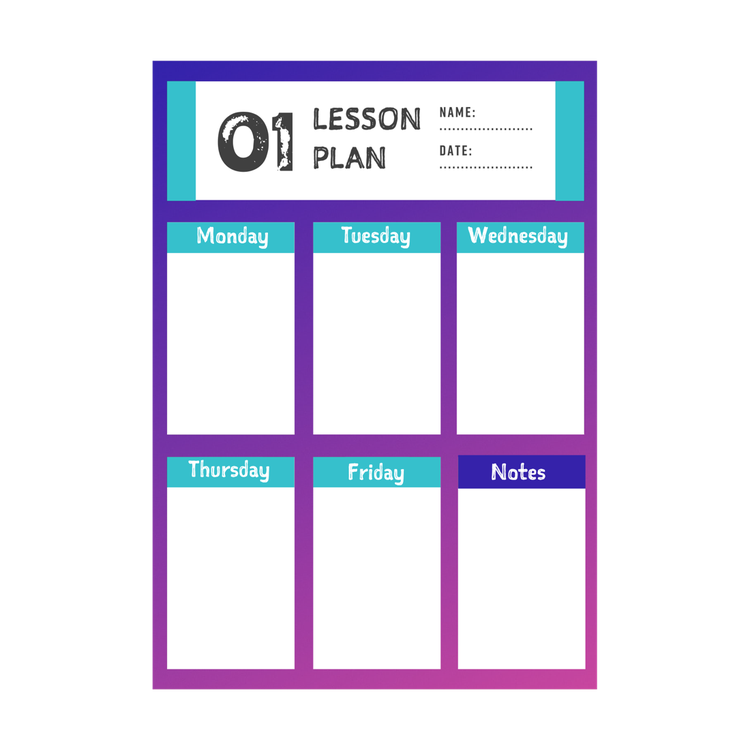Lesson plan examples and templates for any subject

How to create a lesson plan
As an educator, I know how long it can take to make a daily lesson plan. I also know that most teachers don’t have too much time. Luckily, Adobe Express has created tons of lesson plan templates for you to adapt to create your own lesson plan. In this post, I’ll lay out six quick steps for creating effective lesson plans for any grade level and for all types of learners.

Six steps for creating effective lesson plans
1. Identify your classroom learning objectives
First, identify your final learning goal for your students. We often call these “learning objectives.” I ask myself: what do I want my students to learn and be able to do by the end of class? Most often I turn to Bloom’s taxonomy for ideas on verbs that I can use to help craft my learning objectives. Bloom's taxonomy is a model used to break up educational learning objectives into levels of complexity and specificity. A great learning objective is measurable and student centered.
2. Plan specific learning activities with worksheets and at grade level
After you have decided what you want students to learn, ask yourself what they can do to achieve that learning goal. This is my favorite part of lesson planning: writing learning activities. I love thinking about the “I do,” “we do,” and “you do” framework. I plan an activity that I model for students, an activity that we all do together as a class, and then one activity that I give to students for independent work time. This framework ensures that all students get teacher-directed instruction, group work, and individual work time to have independent practice on a new skill or concept.
3. Relate the lesson plan to real life
In addition to planning great learning activities, it can really help students if you connect what they are learning to real life. What questions can you ask your students to help them connect with the concept you are teaching in your lesson plan? Think about how to keep students’ attention with a warm-up that might connect their lives to the material.
4. Seek creative, nontraditional resources
If you are teaching a concept that will help students across multiple subjects, consider broadening your daily plan into a larger unit. Is a field trip in the budget? Grab students’ attention and bring them out into the world to learn the subject matter. Maybe a speaker can be brought in, or you could do a hands-on project. We have many creative examples of lesson plans on the Adobe Education Exchange that are free and easy to use immediately in any class.
5. Evaluate student knowledge
Remember to end each lesson with a formative assessment. You will want to know if your students learned the subject matter. We have a self-paced 30 minute Lightning Learning course on how to create formative assessments and rubrics for any subject — if you want ideas, just enroll here. This course is led by Adobe Education Evangelist and expert educator Jesse Lubinsky.
6. Take time to reflect.
Finally, take time to reflect on the lesson after you have taught it. I have always found that reflecting on my teaching helped me create opportunities for professional learning and growth. What could have gone more smoothly? Were there options for other lessons or learning goals that could have helped my students learn the material better? What went well? What could have gone better?






















